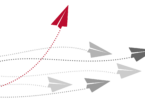Athens, Ga. – The University of Georgia’s Katie Sheehan, a legal fellow with the River Basin Center, has developed a guidebook, “Valuing Conservation Easement Properties: A Guide for Local Tax Assessors,” to help local tax assessors properly value conservation easement properties.
Landowners can use conservation easements to protect conservation and other values on their property by permanently restricting development. Easements are an important conservation tool in Georgia, Sheehan said, where about 90 percent of land is privately owned. They are often placed on land for purely altruistic reasons, but landowners who donate an easement to a qualified land trust—a nonprofit conservation organization—may also benefit from federal, state and local tax incentives.
Although conservation easements have been in use in the U.S. for more than a hundred years, they are relatively new to Georgia.
“The hope for this guidebook,” Sheehan said, “is that, with widespread use by local tax assessors, more landowners will be encouraged to place conservation easements on their property, permanently protecting the values that natural, undeveloped land provide to local governments and the general public.
“In addition, assessments that appropriately consider the impact of a conservation easement on property values reduce the likelihood of landowner assessment disputes, which saves resources that might otherwise be used by local governments responding to these challenges.”
Because of unfamiliarity with conservation easements and a lack of comparable sales data, local tax assessors are often at a loss when valuing conservation easement properties for property tax purposes, Sheehan said. Some landowners and land trusts have reported local property tax valuations of conservation easement properties that do not adequately reflect the permanent restriction of development rights that these instruments impose. When landowners feel that their property taxes may not adequately reflect the impact of a conservation easement, they may be less likely to place these development restrictions on their land.
Sheehan’s guidebook was developed with guidance from an advisory committee consisting of staff from the Georgia Department of Revenue’s Local Government Services Division, the Georgia Land Conservation Program and the Georgia Land Conservation Center; land trust representatives; local tax assessors; and other experts. It is available for free at http://www.rivercenter.uga.edu/publications/pdf/valuing_ce_guide2012.pdf.
While the guidebook is primarily intended for local tax assessors, it also is useful for land trusts and landowners thinking of placing a conservation easement on their land. It explains what conservation easements are, how they work and what kinds of benefits they provide to landowners, local governments and the general public. It describes local tax assessment law and requirements for assessment of conservation easement properties, provides a hierarchy of valuation methods that local assessors can use, notes valuation methods that are inappropriate and describes how to interpret a conservation easement to determine which property rights it restricts.
Funding for the guidebook was provided by the Georgia Forestry Commission’s Urban and Community Forestry grant program.
UGA River Basin Center
The River Basin Center, a public service and outreach initiative of the Odum School of Ecology, brings together science and policy to help communities manage and protect water and related land resources sustainably. For more information, see www.rivercenter.uga.edu.







